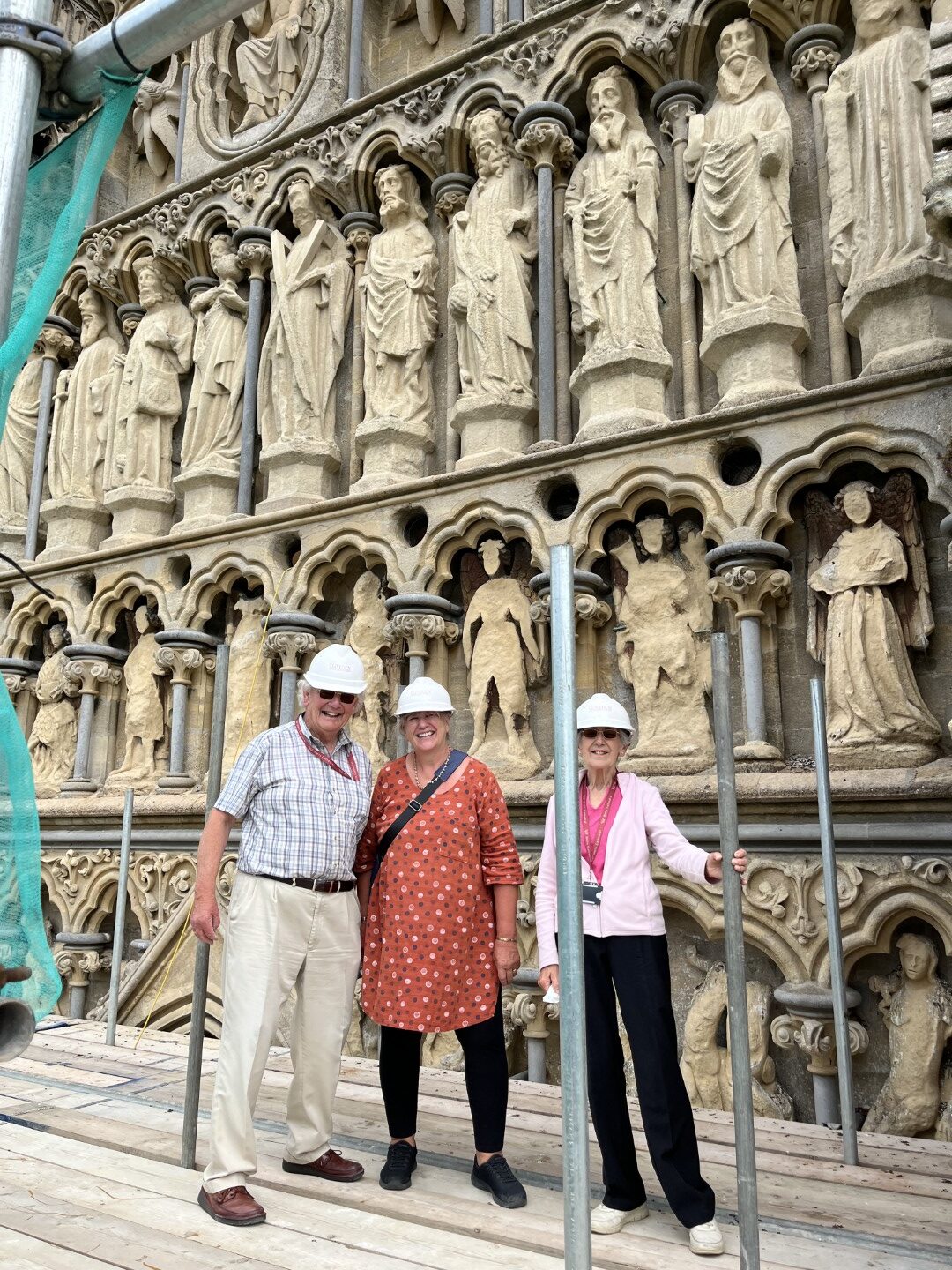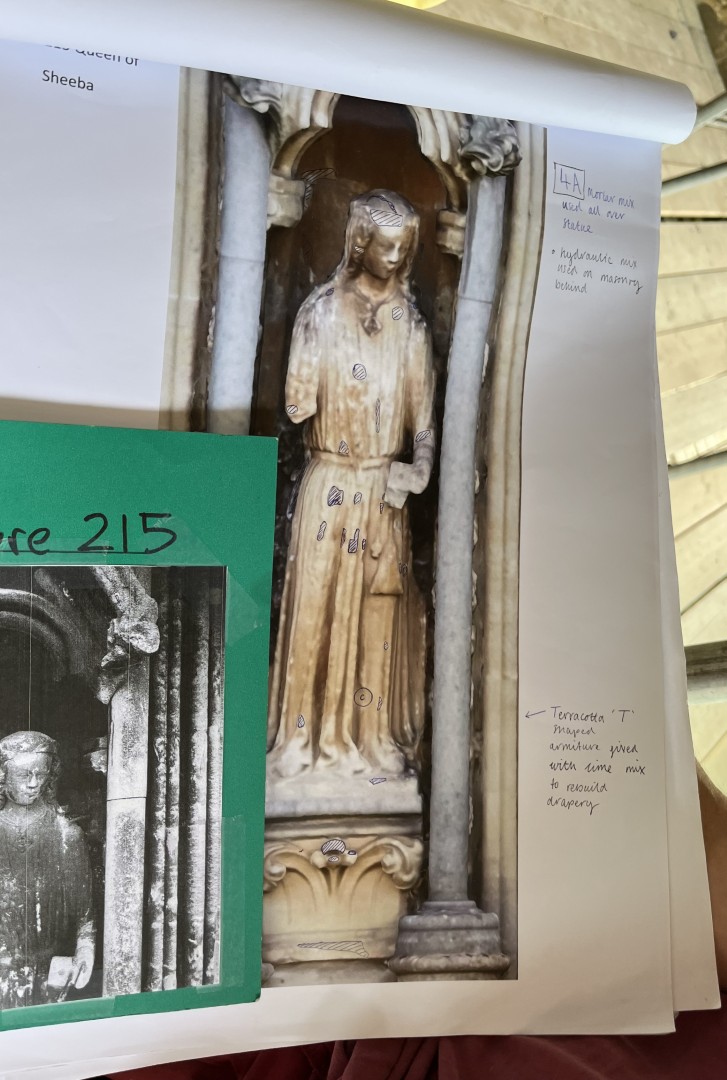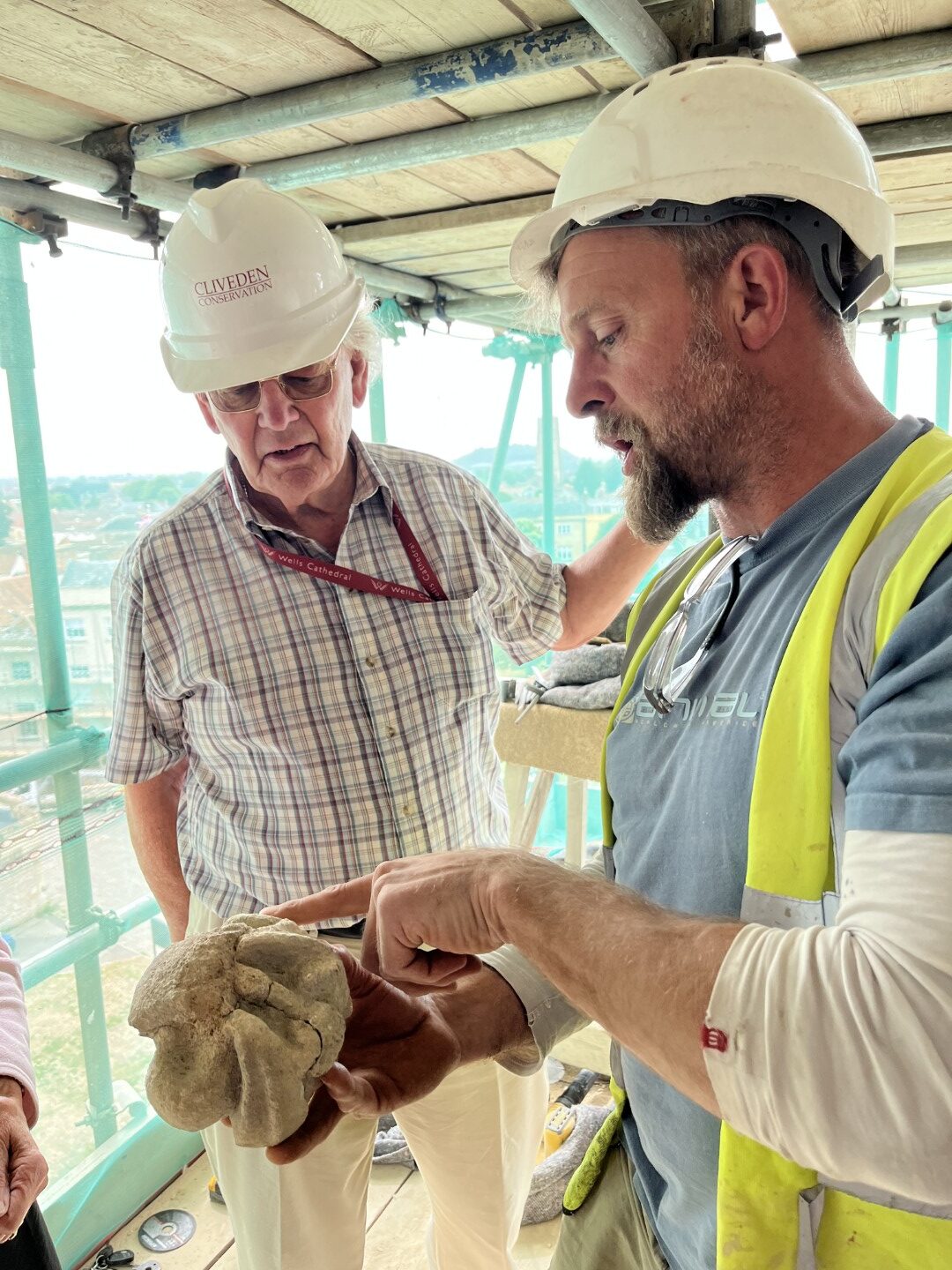Friday 25 July 2025
by Veronica Howe, Cathedral Archivist and Records Manager

Above: Cathedral Archivist and Records Manager Veronica (centre) visited with Guides Robin (left) and Valerie (right)
Yesterday, I had the privilege of seeing the conservation work on the West Front close up, thanks to one of the tours offered to staff and guides. Trepidation about climbing the scaffolding evaporated once we encountered the sturdy stairs and platforms, and we were soon at the top looking at St Andrew.
I have been immersed for the last couple of years in cataloguing material from the seminal West Front conservation of 1974-1986. That project was of international significance and records in the cathedral archives include photographs, plans, drawings and papers concerned with research, committees, fund raising, planning and project management, permissions, the appointment of conservators and masons, correspondence about the development of groundbreaking technical treatments, a royal visit, controversy about the perennial debate between repairing or replacing architectural heritage, and the meticulous archaeological recording done by the late Jerry Sampson.

Above: Meticulous records from the 1980s are being used to track the deterioration of statues such as figure 215, the Queen of Sheba.
Last winter the cathedral architect came to the archives and retrieved records related to the figures identified for work in summer 2025. These were used to draw up the specifications for the conservators. It is satisfying to see records from our archives put to practical use, such as work being undertaken on figure 215, the Queen of Sheba.
It was fascinating being able to ask the conservators about their craft and see them demonstrating their techniques, cutting and reinforcing stone features and applying lime mortar patches.
Hearing about Doulting stone, Kilkenny marble, lime washing and shelter coats brought to life much of what I had learned from the files. I was able to tell the conservators that the hosepipe ban caused by the drought of 1976 meant water from the Palace moat had to be used for lime washing for a time.

Above: expert conservators from Cliveden Conservation share details of their work to date.
We looked at figures on different levels, identifying kings, queens and bishops from their headwear. Some of the smaller details were the most moving – Adam and Eve eating the apple, the fine detail of hair, hands and clothing, the bewildered facial expressions of people lifting coffin lids to emerge at the resurrection, and a feathered and winged angel blowing a trumpet with splendidly puffed out cheeks.
It was humbling to see the humanity in the handiwork of masons from the thirteenth century, details that few people ever see. We were able to see the Arabic numerals on a couple of the figures, evidence of the influence of Islamic craftsmen on the builders of English Gothic cathedrals.
We were very grateful to Douglas and his team for being so patient and accommodating in explaining their work to us. They gave us an afternoon we will never forget. Every time I walk past now, I will remember the feeling of placing my hand over a hand carved by someone 800 years ago, the hand of a figure who has watched over the people of Wells throughout centuries of history.
A selection of further images from tours of the West Front works (June–July 2025) works can be seen below.
Veronica Howe
Cathedral Archivist and Records Manager
July 2025